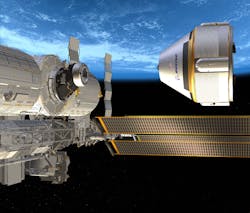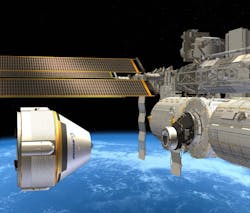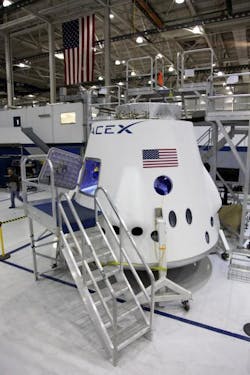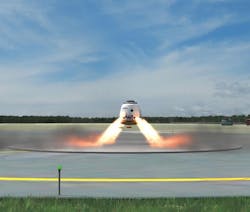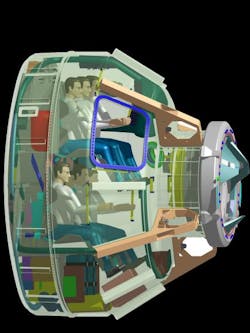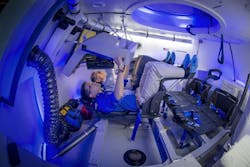NASA Taps Two Companies for Spacecraft to Take Crews to the Space Station
NASA has chosen Boeing and SpaceX to build spacecraft that will ferry astronauts to and from the International Space Station (ISS) by the year 2017. Boeing will build three of its CST-100s to complete the missions in its $4.2 billion contract with NASA to supply crew and supplies to the ISS. SpaceX will complete development of its Dragon V2, a crew-carrying version of its Dragon space capsule that currently hauls supplies up to the space station, and then use it to fulfill its $2.6 billion contract. Each company will launch between two and six missions, according to NASA. And one of these spacecraft will always be docked at the space station after 2017 to serve as the emergency escape vehicle or “lifeboat.”
Since 2011, when NASA canceled its Space Shuttle program, the U.S. has relied on Russian spacecraft to resupply the ISS and take astronauts to and from the orbiting lab, paying $70 million per astronaut and sending roughly seven of them up and back every year. A Russian Soyuz spacecraft has also been serving lifeboat duty since then.
The Dragon V2 will carry up to seven crewmembers or a mix of crew and cargo. None of the crew members needs to be a pilot because SpaceX is designed to be totally autonomous. It can fly unpiloted into orbit atop one of SpaceX’s Falcon 9 launch vehicles, rendezvous and dock with the space station, then re-enter the atmosphere and land on Earth. If needed, an astronaut can manually override the automatic pilot.
The capsule is equipped with eight SuperDraco thrusters, each with 16,400 lb of thrust, that will let it touch down on dry land when returning to Earth. This “soft-landing” capability could come in handy if the capsule is chosen for a return mission to the moon or one to Mars. The capsule also carries parachutes in case an emergency landing is necessary. Because the Dragon V2 lands on solid ground, it can be quickly refueled and prepared for another mission. SpaceX says the capsule will be able to complete 10 flights before a major overhaul is needed.
The thrusters, which can be throttled and turned on or off at any time, are also key components of an escape subsystem that will safely carry the capsule and passengers to safety in case of an accident. The escape plan will work anytime during launch –from when the crew first straps in on the launch pad to when the Dragon V2 capsule enters orbit. The thrusters were 3D printed out of Inconel using direct metal laser sintering.
SpaceX will be upgrading the current cargo-only version of the Dragon to make it capable of carrying astronauts. For example, they will add impact-attenuating landing legs, larger windows, and an ISS docking adapter, as well as upgrade the phenolic-impregnated carbon ablator (a heat shield). It could make its first flight next year, and carry its first human crews in test flights in 2016.
The Boeing CST-100 also carries seven crewmembers or a mix of cargo and crew and can be reused 10 times before needing to be refurbished. The hull of the 10-ton capsule contains no welds, which should make it easier to assemble and less prone to defects.
The CST-100 landing equipment--cushioning airbags, detachable heat shield, and three landing parachutes--let it touch down on land during testing. There’s also a rocket-powered escape subsystem for the crew.
Inside, Boeing used some of the technology it developed for airliners to provide LED “Sky Lightning” inside the capsule. And crewmembers will be able to control the craft using tablets interfacing through onboard wireless Internet. It can stay in space in free flight for up to 60 days, or be docked at the space station for up to 210 days. And while the initial launch vehicle will be Atlas V, it will also be compatible with other launchers, including the Delta IV and Falcon 9.
One of the three CST-100s Boeing is building will carry its first crew during an early 2017 test flight; it is then scheduled to take a crew to the space station later in 2017.
